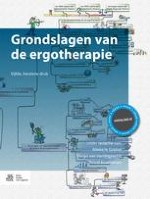Samenvatting
Het dagelijks handelen is het uitvoeren van activiteiten en taken die contextgebonden, betekenisvol en ervaringsvol zijn. Tijdens het uitvoeren van activiteiten is sprake van een bepaalde aandacht en betrokkenheid en doet men ervaringen op. De persoon, de context en het handelen zijn de elementen van het domein van de ergotherapie en het mogelijk maken van het dagelijks handelen is het primaire doel van de ergotherapie. Hierbij is de cliënt van de ergotherapie niet meer alleen de persoon en zijn systeem, maar kunnen ook groepen mensen, een gemeenschap of een populatie bedoeld worden. Uitgangspunten over het ‘veranderen door handelen’ worden door ergotherapeuten toegepast tijdens het aanbieden van ergotherapeutische interventies waarbij cliënten en/of de context kunnen veranderen. Door het uitvoeren van activiteiten is onder meer een ontwikkeling van het dagelijks handelen merkbaar, kan men beter leren handelen, effectiever, efficiënter en veiliger handelen en wordt het dagelijks handelen onderhouden. Dagelijks handelen leidt tot participatie. Participatie is een persoonlijke ervaring van betrokkenheid in een levenssituatie door actief activiteiten uit te voeren en/of deel uit te maken van de context.
